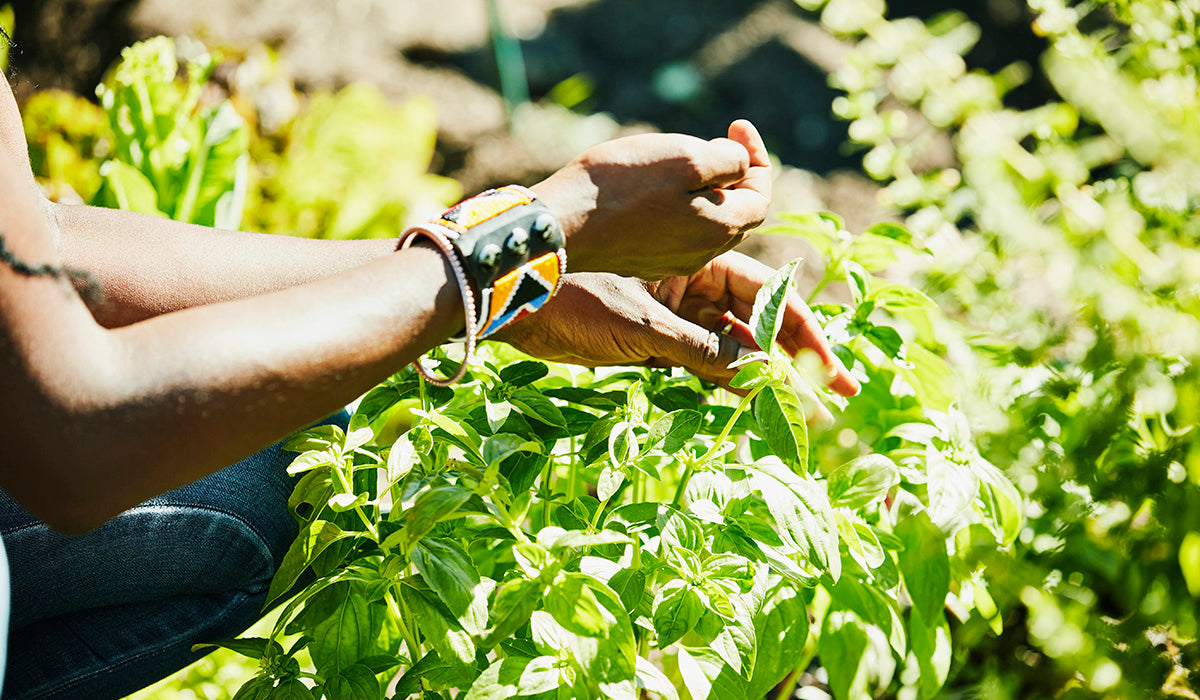Our entire food system needs some serious TLC. In order to keep up with sustainability, health and biodiversity, it is crucial to rehab some of our current agricultural and ecological practices — and regenerative agriculture might be just the solution.
What is Regenerative Agriculture?
If you are wondering what the regenerative agriculture definition is you have come to the right place. To put it simply, regenerative agriculture is a way of nurturing, or re-nurturing, soil so that soil organic matter can be rebuilt, and degraded soil biodiversity can be restored. The goal is to create, or recreate, soil that acts more like a sponge for the healthiest nutrients and minerals. Regenerative farming helps with growing nutrient dense foods. Regenerative agriculture practices also pull damaging CO2 from the atmosphere which helps combat climate change and increases clean water run-off.
What are the Principles of Regenerative Agriculture?
Over the years, our food has become significantly less nutrient-dense, more chemical-heavy and essentially less effective at providing all the vitamins and nutrients humans need on a daily basis. This is because healthy soil is key to healthy food.
We know the urgency of the climate crisis. Regenerative agriculture can actually help in the fight against global warming and climate change by removing and absorbing carbon dioxide, also known as soil carbon sequestration. In fact, studies show that “it is clear that regenerative agriculture, as a diverse portfolio of practices that can be adapted to specific regions and crop types, can and should play a major role in tackling climate change, with the potential to remove 100-200 GtCO2 by the end of the century.”
In short, regenerative agriculture has the ability, or potential, to fight or even reverse climate change while also addressing food insecurity, by increasing the quality and quantity of food accessible worldwide.
With these potential benefits, we need positive changes immediately. There’s no time (or food) to waste.
What are the Benefits of Regenerative Agriculture?
Regeneration International, a non-profit organization dedicated to regenerative agriculture, believes that the process has the potential to help reverse global warming by drawing out the “tons of excess carbon already released into the atmosphere and sequester it in the soil.” Its far-reaching benefits could potentially include restoring farmers’ independence by “ending corporate control over the global food system”, regenerating ecological health, helping to revitalize local economies, and enhancing human health and well-being. This is in addition to restoring soil health.
Regenerative Agriculture Defined
Components of regenerative agriculture include avoiding chemical pesticides and advocating for more farm-friendly practices like the rotation of livestock and crops. It also involves no-till farming (growing crops without disturbing the soil with tillage — which results in a minimal disturbance to fields and organisms within them) and the improvement of composting practices.
Currently, our world farming systems need great improvement — and fast.
MegaFood and Regenerative Agriculture
Regenerative agriculture is at the heart of our company. At MegaFood, many of our products contain foods from our most trusted farm partners who are as committed to sustainability and regenerative agriculture as we are. We’re out to change the world, starting with food and soil health using regenerative agriculture.
In fact, we’ve partnered with The Carbon Underground and Green America, to develop a new, outcomes-based regenerative agriculture global verification standard for food grown in a regenerative manner in order to help farmers to restore the carbon cycle and build up soil health, increase crop resilience and boost nutrient density.
We’ve also advocated for nutritional policy reform, to improve food insecurity worldwide, and are actively lobbying against harmful chemicals being sprayed not only on the foods we consume but in our local parks and playgrounds, as well.
What Can You Do To Help?
Regeneration International issues this warning and motivation to act: “According to soil scientists, at current rates of soil destruction (i.e. decarbonization, erosion, desertification, chemical pollution), within 50 years we will not only suffer serious damage to public health due to a qualitatively degraded food supply characterized by diminished nutrition and loss of important trace minerals, but we will literally no longer have enough arable topsoil to feed ourselves.
To help further this mission and the tangible benefits of regenerative agriculture, you can seek out brands and organizations that are dedicated to using sustainable and regenerative agriculture practices. You can also begin or volunteer to help with a community garden, seek opportunities at local farms and educate your friends and family on the importance of regenerative agriculture and why it matters.



Leave a comment
This site is protected by hCaptcha and the hCaptcha Privacy Policy and Terms of Service apply.